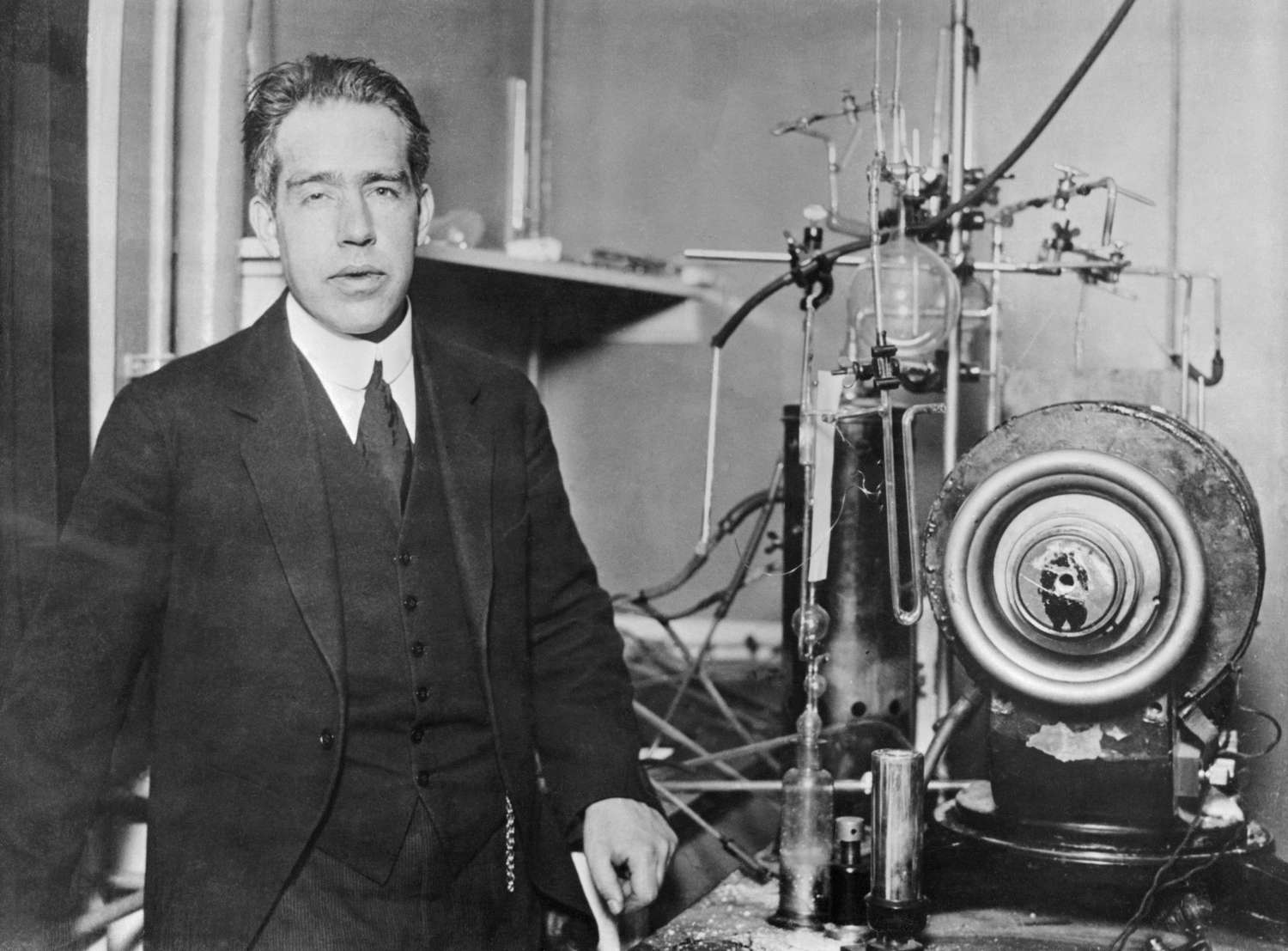Niels Bohr stands as one of the most influential figures in the history of quantum physics. His discoveries illuminated the mysterious nature of atomic structure and laid the foundation for the development of modern physics. To understand what Bohr truly discovered, it is necessary to consider the scientific context of the early twentieth century—an era when the limitations of classical physics became increasingly apparent, especially at the atomic and subatomic levels.
The Atomic Model Before Bohr
Before Bohr’s groundbreaking work, the prevailing atomic model was that proposed by Ernest Rutherford in 1911. Rutherford’s model described a dense, positively charged nucleus with electrons orbiting around it, much like planets orbit the Sun. Though innovative, this model harbored a fundamental flaw: according to classical electromagnetic theory, electrons should emit energy as they orbit, spiraling into the nucleus within nanoseconds. Yet, atoms are clearly stable, and this discrepancy demanded explanation. Furthermore, the spectral lines observed in hydrogen’s emission spectrum could not be accounted for by classical theory, highlighting further gaps in understanding.
Creation of Bohr’s Quantum Framework
In response to these theoretical hurdles, Niels Bohr released a series of three papers back in 1913, which are now recognized together as the Bohr Model. The significant breakthrough introduced by Bohr was incorporating early quantum concepts—especially Max Planck’s proposition that energy is quantized—into the structure of atoms.
1. Quantized Electron Orbits Bohr postulated that electrons exist in discrete, quantized orbits around the nucleus, each with a specific energy level. These orbits were permitted under the radical premise that electrons in them do not radiate energy. Only when jumping between these orbits do electrons absorb or emit energy, in the form of light, corresponding exactly to the differences in energy between the initial and final orbits. This concept expressed mathematically as:
ΔE = hν
where ΔE represents the difference in energy, h refers to Planck’s constant, and ν denotes the frequency of the emitted or absorbed light.
2. Description of the Hydrogen Spectrum
Bohr’s model successfully described the distinct lines observed in the hydrogen emission spectrum. Every spectral line is produced by an electron moving between defined orbits. This interpretation aligned with experimental observations with remarkable accuracy, confirming the quantization hypothesis and revealing the constraints of Newtonian physics in the atomic domain.
3. The Principle of Correspondence
Understanding the need to reconcile quantum and classical physics, Bohr introduced the Correspondence Principle. It stipulates that quantum results must agree with classical physics in the appropriate limits (such as high quantum numbers), ensuring consistency across scientific domains.
Broadening the Impact of Bohr: Illustrative Examples and Later Progress
Bohr’s model of quantum mechanics represented a major change, and its impact quickly extended well beyond hydrogen atoms:
Helium and Multi-Electron Systems
The simplicity and success of Bohr’s model with hydrogen prompted attempts to extend it to more complex atoms such as helium. These efforts revealed significant shortcomings; the model could not adequately account for the behavior of electrons in multi-electron systems due to electron-electron interactions and more complex energy structures. These limitations paved the way for the next generation of quantum theory—wave mechanics and matrix mechanics—developed by Schrödinger, Heisenberg, and others.
The Discussions Between Bohr and Einstein
Bohr played a crucial role in key discussions about the philosophical meanings of quantum mechanics. He championed complementarity, the notion that entities can exhibit wave-like or particle-like characteristics based on the experimental conditions, and supported a probabilistic approach to quantum phenomena, putting him in philosophical conflict with Albert Einstein. Einstein notably challenged this perspective with the remark, “God does not play dice with the universe,” highlighting his unease with the unpredictable nature of quantum theory. Bohr argued back, asserting that these constraints were natural properties, not defects of the theory.
Technological and Scientific Impacts
The insights from Bohr’s Model led to both practical innovations and theoretical advancements. Spectroscopy evolved into an essential tool used across various disciplines, such as chemical analysis, astrophysics, and materials science. The development of laser technology, quantum computing, and semiconductors can all be traced back to the quantum leaps introduced by Bohr.
In chemistry, Bohr’s quantized electron shells provided the first robust explanation for the Periodic Table’s structure, influencing the understanding of chemical bonding—later refined by quantum mechanics but still rooted in Bohr’s original concepts.
Bohr’s contributions addressed deep enigmas about atomic stability and spectral lines, revealing a cosmos controlled by principles distant from classical understanding. By integrating quantization at the core of atomic physics, Bohr not only resolved urgent scientific conundrums but also compelled a reevaluation of reality’s nature at microscopic levels. His ideas continue to be intertwined with modern physics, illustrating how beautifully one insight can revolutionize both scientific theory and its application.
